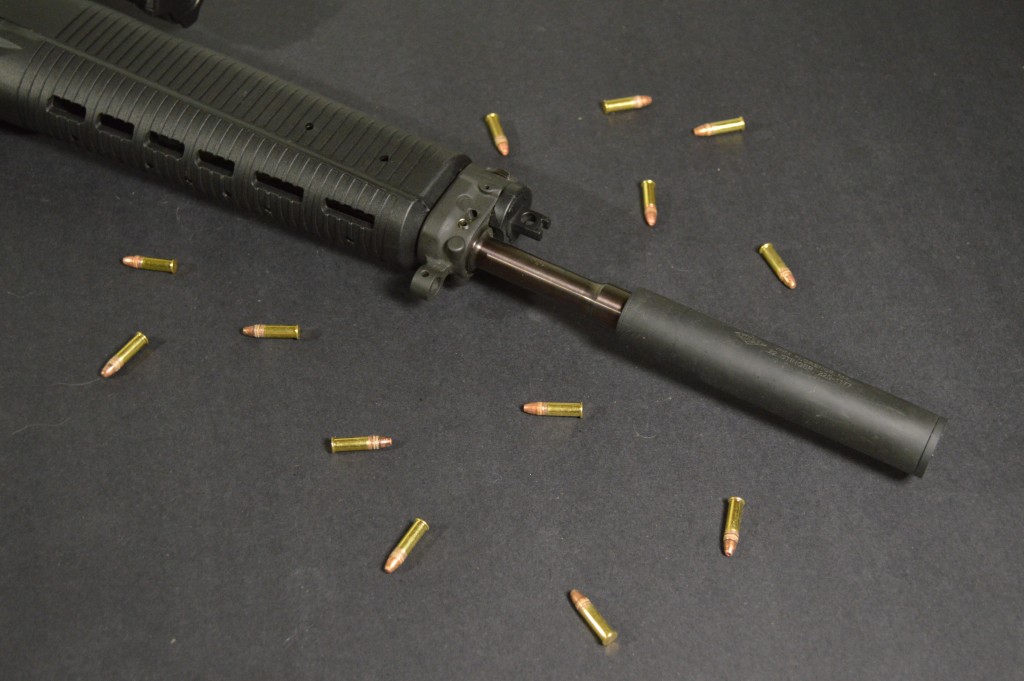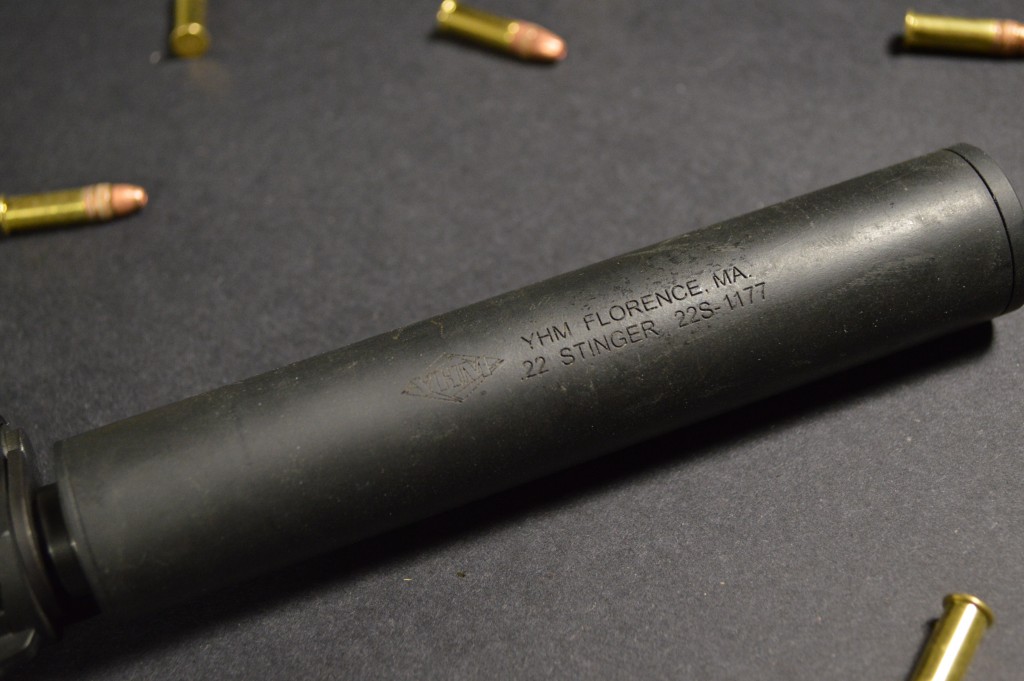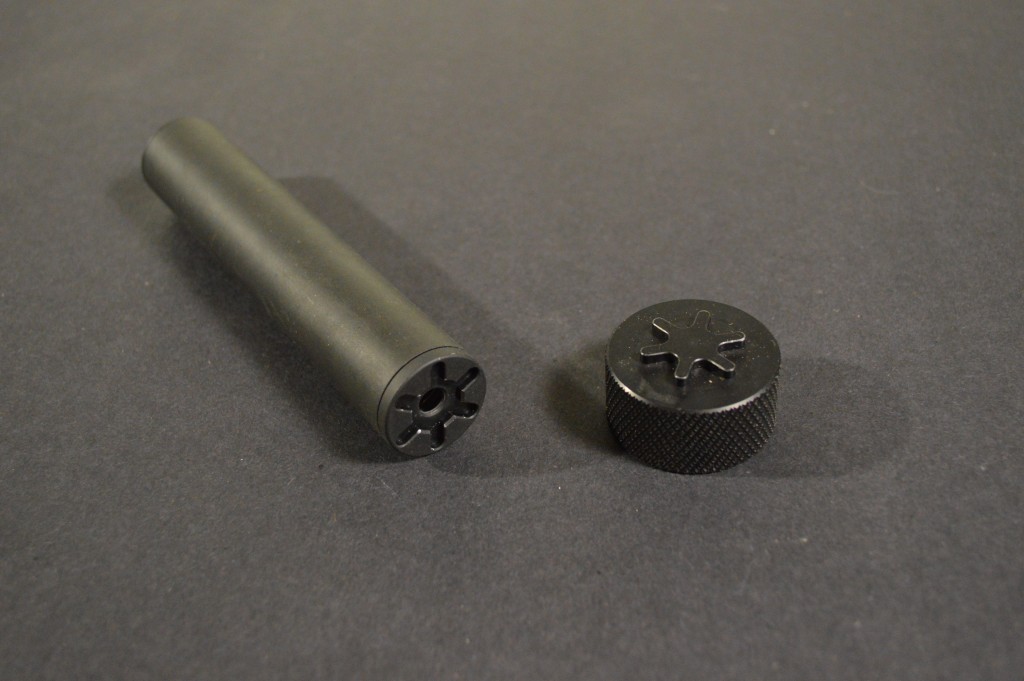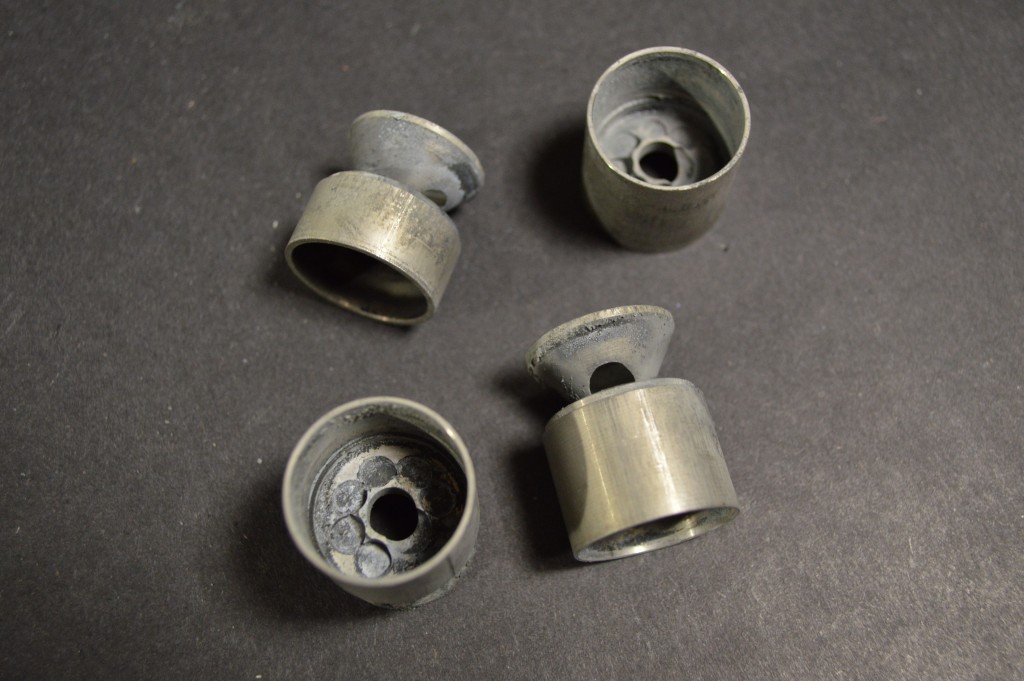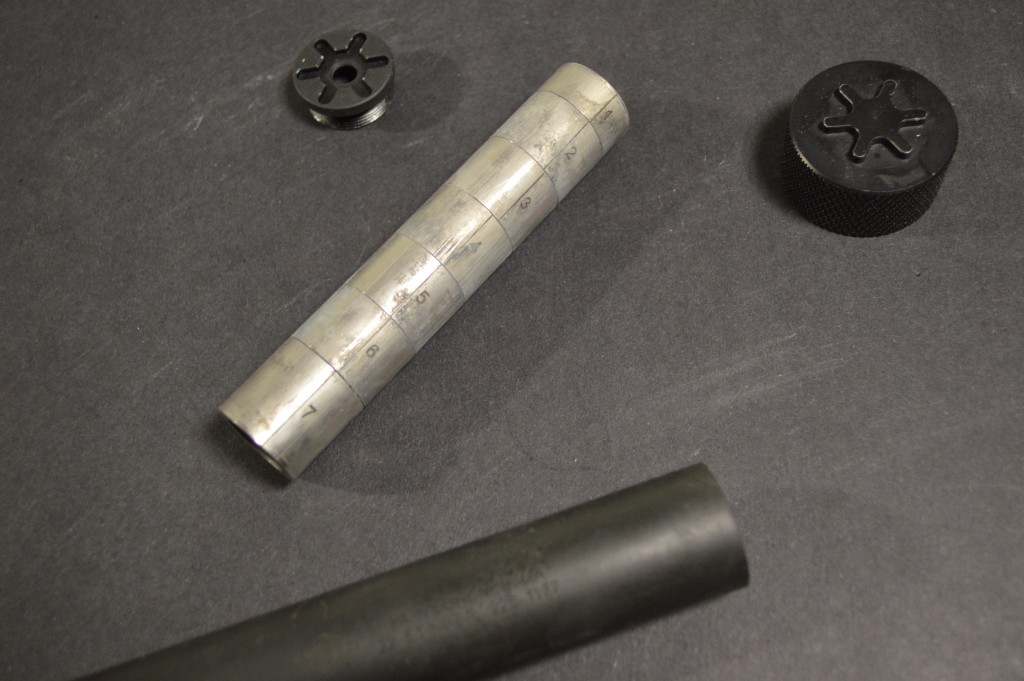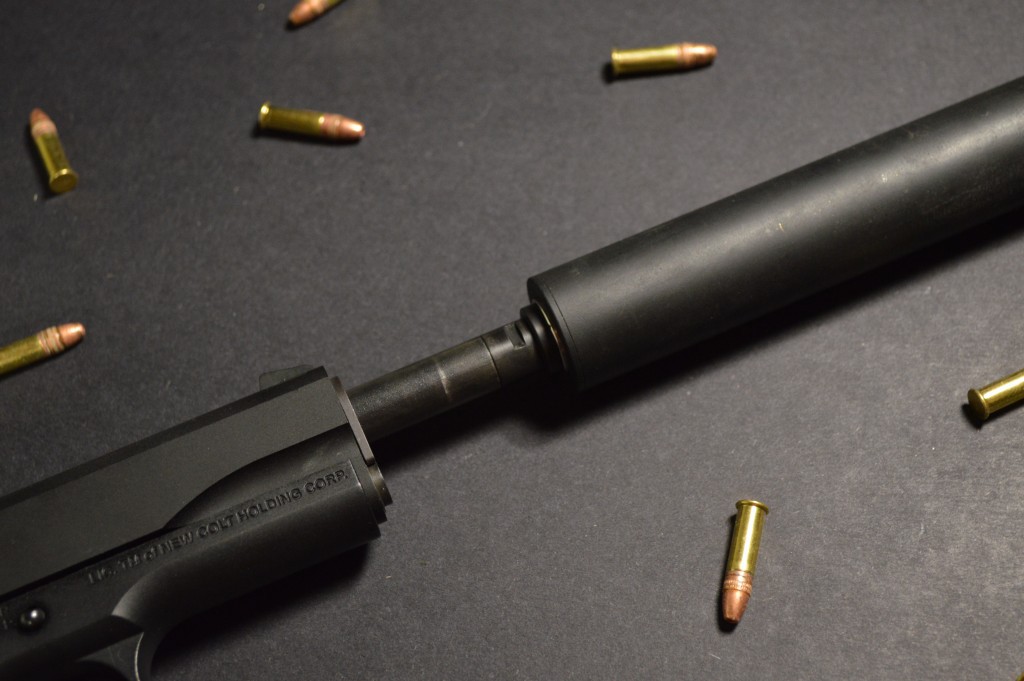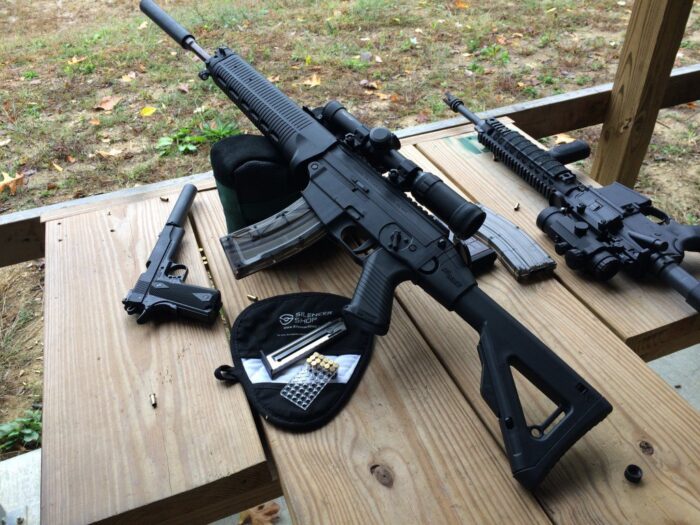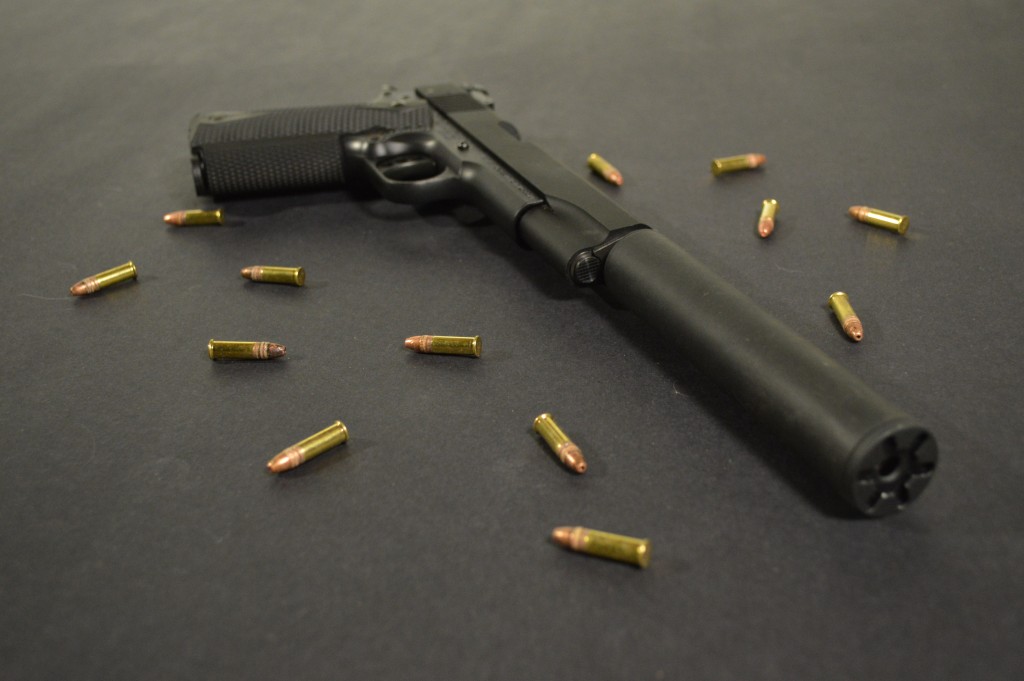Silencer Shop Authority: YHM .22 Stinger Review
Over the past five years, few areas of the firearms market have grown as quickly as suppressor ownership in the United States. Previously considered a daunting task and legal maze, acquiring NFA regulated items has become almost mainstream as growing numbers of shooters turn to the Internet for information on the process and guides to legal suppressor ownership. Perhaps unsurprisingly, some of the most affordable and best-performing silencers are .22 caliber models, and these are often the “gateway drug” for suppressor novices looking for the best (or in this case worst) bang for the buck.
Since rimfire silencers are so popular, I wanted to take a step away from some of the well-known options to examine a few alternatives that might appeal to shooters with specific requirements or budgets. After some back and forth with my friends at Silencer Shop, I opted to bring in the Gemtech GM-22 and YHM Stinger for further review.
Today, we will check out the Stinger. Intended to replace YHM’s aging Mite, the Stinger is an aluminum and stainless steel suppressor that is rated for calibers up to 5.7x28mm. While the Mite was maligned for its comparatively poor performance, YHM has set out to the right the ship with the Stinger. With plenty of question marks surrounding the can, I know some are interested to see how it compares to established market leaders.
Size and Weight
The first thing shooters will notice when picking the YHM Stinger up is that it feels very, very solid. For those keeping score at home, the Stinger weighs about as much as three A2 flash hiders. Compared to other .22 suppressors, YHM’s six-ounce silencer is far from a lightweight. While some all-aluminum .22 LR silencers may weigh as little as 1/3 as much as the Stinger, it is not uncomfortably heavy, and the weight does inspire confidence that the suppressor should handle thousands and thousands of rounds, even on fully automatic firearms. Furthermore, the weight difference between an aluminum/steel silencer like the Stinger and an all-aluminum suppressor is only noticeable on handguns.
At 5 3/8 inches in length and 1 inch in diameter, the Stinger falls in the mid-to-large range of rimfire silencers. Even so, it is shorter than popular competitors like the Spectre II and Checkmate. In terms of size, I would say that the Stinger comfortably falls in the middle ground between large and small, offering solid suppression in a reasonably sized package.
Finish
The YHM Stinger’s 6061 T6 aluminum tube features a simple, but effective anodized finish that should hold up well to the elements and moderate abuse. Internally, the baffles are plain stainless steel and do not have any sort of specialized treatment to aid in cleaning. As such, some shooters might be well served to consider the famous Fire Clean treatment or similar oil conditioning to make the baffles easier to clean between uses.
Design
As I mentioned before, the YHM Stinger consists of a 6061 aluminum tube with stainless steel baffles. Because of the hefty core, YHM rates the suppressor for use with calibers up to 5.7×28 and fully automatic .22 LR usage. After playing with the Stinger for a week or so, I can absolutely vouch for the suppressor’s robustness. I highly doubt that anyone will wear one of these silencers out through anything resembling normal usage.
The Stinger’s baffle stack is a relatively novel take on the traditional K-baffle design, but it does pull much of its inspiration from Gemtech’s Alpine. While the actual blast surface of each baffle is a fairly unremarkable take on the ported “K,” all seven in the stack feature skirts which shield the outer tube from lead buildup and debris that can make disassembly challenging after a few hundred rounds of dirty rimfire ammunition. After dumping at least 300 rounds through the Stinger in my testing, I had no problem pulling the core for cleaning.
Something to note is that the cones of each K slide inside the skirts of subsequent baffles. Some shooters have expressed concerns that such a design could cause the core to lock up and could pose challenges for disassembly and cleaning. My experience has shown that several hundred rounds will cause the baffles to stick to one another somewhat, but the tolerances seem to allow for enough wiggle room that the stack should not freeze solid if cleaned every 1,000 rounds or less.
Taking the Stinger apart for cleaning is quick and easy. Using the included tool, the silencer’s front cap can be unscrewed and removed. Once the front of the suppressor is off, the tube can simply be inverted, and the core should fall out with little more than a tap. As a fully stainless assembly, the Stinger’s core can be cleaned with harsh methods like “the dip” or ultrasonic cleaners to restore the stack to its natural beauty. Because the baffles aren’t all equal in size, the stack is numbered one through seven. Moreover, indexing lines are marked on the outside of each baffle’s skirt to help shooters align the internal baffle ports and minimize point of impact shift.
In other notes, the YHM Stinger is a direct thread suppressor and is limited to 1/2×28 thread pitch. This should not be a problem for most rimfire shooters as 1/2×28 is the industry standard for the caliber. In fitting the Stinger to my Walther/Colt Gold Cup and SIG 522, I had no problems with thread length; the Stinger seems to handle the longer threads of the 522 just fine and tightens against the barrel’s shoulder without issue.
Range Report
Suppressive performance is undoubtedly where the money is made in the .22 LR world. Since all rimfire silencers are relatively small, those that are quietest usually dominate the market. Fortunately for YHM, the Stinger is near the top of the class in overall performance. K-baffles are among the most effective designs for low-pressure rounds and YHM was wise to use them in the Stinger.
For a refresher, let’s take a look at how the K-baffles work. As hot gasses collide with the blast surface of each baffle, most are significantly slowed by the flat face of the K, but a small number of particles are allowed to pass relatively easily through the port (or mouse hole) cut into the bore of the baffle. The varied velocity of gases within the can helps to create turbulence inside the tube, and rather than shooting straight forward out of the muzzle; most particles will exhaust their kinetic energy moving laterally through the suppressor. To better trap these hot gasses, the back face of each K-baffle features a ported cone. This cone encourages some of the particles to move toward the outside of the tube, where they are largely captured and prevented from moving back toward the bore line. One of the key benefits to the design, aside from pure suppression, is that the gasses trapped near the outside of the can are typically prevented from moving rearward by the back of the flat blast face. The end result is that K-baffles are among the best in terms of suppression at the muzzle and blowback at the rear of the firearm.
As mentioned, the baffle design works well in the YHM Stinger. Paired with Gemtech Subsonic ammunition, the silencer sounds very good to the shooter as well as bystanders. Unlike monocore competitors, first-round pop is virtually nonexistent, and the first round through the silencer seems as good as the last. The Stinger’s tone is a bit more difficult to describe, but it is slightly sharper than monocore designs I have tried. Sadly, I do not have metering results for the Stinger, but I would estimate that it comes in at around 114 or 115 dB. Overall, this suppressor falls well within the “hearing safe” range.
The video posted below should help answer any questions about the Stinger’s tone. The silencer sounds loud in the recording, but compare it to the spent casings that are hitting nearby. As you will see, the Stinger fares reasonably well.
Blowback in all .22 LR suppressors is relatively minimal, but the Stinger performs exceptionally in this regard. Even so, I was intrigued to find that YHM’s silencer added just enough additional backpressure to help my Walther/Colt 1911 function reliably with its least favorite fodder, Federal bulk ammunition.
To test the point of impact shift, I mounted the Stinger to my SIG 522 equipped with a Primary Arms 1-4x24mm variable power scope. While I’ve noticed some POI shift with other .22 LR suppressors, the Stinger seemed to have no discernable effect. I did not attempt to reconfigure or misalign the baffles to see if port hole locations affect point of impact in any measurable way.
Conclusion
As far as suppressor manufacturers go, I’ve always felt that YHM is rather underrated. The company seems to offer solid silencers at reasonable prices. After spending time with the Stinger, my opinion remains unchanged. It is far from a “game-changer” (whatever that means), but it is a substantial step up from their outdated and sometimes maligned Mite and goes toe-to-toe with some of the segment’s top performers. The stainless baffle stack adds weight, but it also allows for use with additional calibers, fully automatic firearms, and harsh cleaning methods. The choice of K-style baffles seems obvious in this case, but the execution is excellent, and the skirts help shield the Stinger’s outer tube from lead buildup, which can seriously frustrate the disassembly process. Shooters who own YHM’s older Mite rimfire silencer should be happy to hear that the company will upgrade Mite cores to Stinger specs for $200.
Overall, the Stinger is a good suppressor at an acceptable price. Listed at around $300 at Silencer Shop, it is priced in line with competitors’ similarly featured silencers and while the rimfire suppression market is certainly crowded, shooters would be wise to consider YHM when shopping for a .22 LR suppressor.
An information security professional by day and gun blogger by night, Nathan started his firearms journey at 16 years old as a collector of C&R rifles. These days, you’re likely to find him shooting something a bit more modern – and usually equipped with a suppressor – but his passion for firearms with military heritage has never waned. Over the last five years, Nathan has written about a variety of firearms topics, including Second Amendment politics and gun and gear reviews. When he isn’t shooting or writing, Nathan nerds out over computers, 3D printing, and Star Wars.


